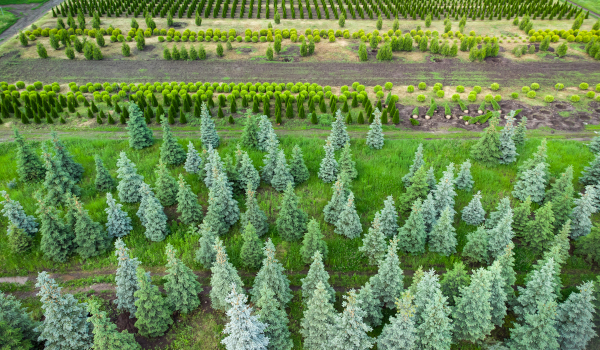Nature-based solutions no silver bullet for climate change: Council of Canadian Academies
Enhancing carbon storage in natural ecosystems can make a modest six-per-cent reduction in Canada’s greenhouse gas emissions, even with aggressive policy support and deployment, says a new report from the Council of Canadian Academies (CCA).
But using such “nature-based climate solutions” (NBCSs) can offer considerable co-benefits that increase communities’ and conserved ecosystems’ resiliance in the face of climate change, according to the report from a 15-member expert panel. These co-benefits include coastal flood control, improved air and water quality, reduced soil erosion, and greater biodiversity,
“NBCSs will not be a silver bullet solution that will magically address the bulk of Canada’s emissions goals. Complementary actions will need to be taken across energy and transportation sectors,” panel chair Dr. Glen MacDonald said in an email to Research Money.
“However, NBCSs can and must play a significant role in these efforts, if the 2030 and 2050 targets are to be reached.”
MacDonald, a Canadian who earned his PhD at the University of Toronto, is the John Muir Memorial Chair in Geography and a Distinguished Professor at the University of California Los Angeles.
Canada will require every mechanism available to meet its target to reduce greenhouse gas (GHG) emissions to at least 40 per cent below 2005 levels by 2030, and to achieve net-zero emissions by 2050, he said.
Just as important as using NBCSs, and continuing to make significant GHG reductions from fossil fuels, is preserving the globally significant stock of carbon stored in Canada’s vast and ecologically diverse landscapes, according to the report.
“Ultimately, the Panel believes that Canada’s — and the world’s — future depends on how effectively Canada’s vast carbon stocks are preserved, rather than the extent to which rates of natural carbon sequestration in these systems can be enhanced,” says the report.
Canada’s forests, wetland and soil systems contain vast stores of carbon that have been sequestered over thousands of years, MacDonald said. “Maintaining those stores in situ (in place), rather than seeing them released to the atmosphere, as climate changes over the 21st century, is extremely important.”
For example, for many decades, Canada’s managed forests have been a globally significant sink for carbon. But due to large-scale natural disturbances, including the burning of more than 1.4 million hectares, those forests were estimated to be a net source of carbon dioxide by 2018, MacDonald said.
“Policies and practices for implementing NBCSs can help avoid ecosystem degradation and such [GHG] releases,” he noted.
Environment and Climate Change Canada, along with six other supporting federal departments and agencies, asked the CCA to examine the potential for enhancing carbon storage and reducing emissions through nature-based solutions to support climate change mitigation and adaptation planning in Canada.
“Limited evidence” of NBCSs’ national potential
Nature-based climate solutions refers to the protection, restoration, or expansion of ecosystems that sequester carbon, or reduce emissions to the atmosphere. These actions can include restoring forest cover, managing nutrient inputs to croplands, and avoiding deforestation or wetland drainage.
The expert panel found that a “credible estimate” of NBCSs’ mitigation potential that would be cost-effective (i.e. carbon sequestration or emissions reductions achievable at $100 per tonne or less) is approximately 40 million tonnes of carbon dioxide equivalent per year in 2030 — or approximately six per cent of Canada’s current annual emissions.
The panel’s report notes that implementing NBCSs will require careful consideration of costs, policies, behavioural barriers, and technical impediments, to determine which NBCSs are the most promising for widespread use in Canada.
However, national estimates of NBCSs mitigation potential in Canada are based on limited evidence “and remain highly uncertain,” according to the report.
Cost estimates of deploying NBCSs are based on scant evidence, and there has been limited consideration of factors such as carbon leakage, commodity market effects, efficacy of policy instruments, transaction costs, and behavioural or social resistance to the adoption of new practices, says the report.
But MacDonald said there’s enough understanding of the biophysical aspects of Canada’s most significant and promising landscapes — including where most of the carbon is currently sequestered and the rates of sequestration — to implement and monitor NBCSs. “Given Canada’s lagging trajectory toward its 2030 and 2050 emissions targets, it is clear that the time to act is now.”
Noting that all carbon stocks across Canada are on the traditional territory of Indigenous peoples, the expert panel said it believes “Indigenous governments and communities are best placed to effectively manage the natural environment in ways that both strengthen the conservation of current carbons stocks, as well as enhance the ongoing sequestration of atmospheric carbon and reduction of emissions.”
More than $3 billion for planting trees
The federal government has committed $4 billion, through its Nature Smart Climate Solutions Fund (being administered by Environment and Climate Change Canada), over the next 10 years to nature-based climate solutions.
However, the bulk of this funding — $3.19 billion — will go toward planting two billion trees.
In comparison, $631 million will go toward other, yet-to-be-decided activities, while $185 million will go toward “Agricultural Climate Solutions.”
NBCS-based practices in forest, agricultural land, grassland, and peatland landscapes have the greatest potential — in terms of cost, barriers to adoption and deployment — to sequester additional carbon or reduce GHG emissions over the next three decades, according to the expert panel’s report.
“In our discussion of forests, we explicitly discuss forest conservation along with a variety of management approaches such as reduced harvesting, increased harvest rotation periods, and changing use of harvest residue and products,” MacDonald said.
Despite Ottawa’s $3.19-billion commitment to planting trees, or restoring forest cover, this NBCS has “low potential and high cost in 2030” and “major barriers to implementation,” says the report.
According to the report, agriculture-based NBCSs such as management of crops soil and nitrogen, have the “highest overall potential” by 2030. But the agricultural area has the lowest amount of federal Nature Smart Climate Solutions funding.
MacDonald responded that the expert panel's mandate and its report “do not enter into the realm of making specific policy recommendations.”
R$
Events For Leaders in
Science, Tech, Innovation, and Policy
Discuss and learn from those in the know at our virtual and in-person events.
See Upcoming Events
You have 0 free articles remaining.
Don't miss out - start your free trial today.
Start your FREE trial Already a member? Log in
By using this website, you agree to our use of cookies. We use cookies to provide you with a great experience and to help our website run effectively in accordance with our Privacy Policy and Terms of Service.






